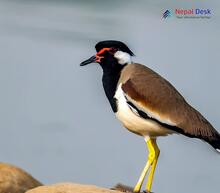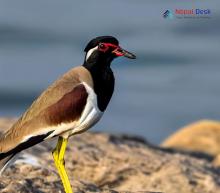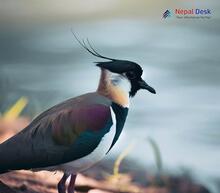For those who adore birds and nature, the Vanellus genus has a unique spot in the realm of bird classification. Part of the Charadriidae family, this genus includes a variety of lapwings and plovers. In this article, we'll uncover the captivating evolution of the Vanellus genus, discuss some fascinating facts about its members, and investigate their presence within Nepal's stunning scenery.
Evolutionary Roots
The Vanellus genus has a remarkable evolutionary background that extends millions of years. With 24 identified species worldwide, their origins have been linked to early Miocene fossils (around 23 to 5 million years ago). It's believed that these birds emerged in Asia or Africa and gradually spread across continents over time, perfectly adapting to various environments.
Captivating Features
Vanellus birds are celebrated for their eye-catching appearances and distinct behaviors. Many species display striking plumage patterns that range from brown or sandy colors to vivid blacks, whites, or grays. A telling feature among most is the unique tuft of feathers or crest adorning their heads. Their one-of-a-kind vocalizations also set them apart. Most birds in this genus produce a variety of calls used for warning signals or communicating with fellow group members or mates.
Habitat and Life in Nepal
Their ability to thrive in numerous habitats serves as evidence of their adaptability. They can be found living in grasslands, wetlands, farmlands, and coastal areas - highlighting their ecological flexibility across continents. Nepal's varied ecosystems host several members of the Vanellus genus. One example is the well-known Red-wattled Lapwing (Vanellus indicus), commonly found near rivers, lakes, and damp grasslands. The striking Yellow-wattled Lapwing (Vanellus malabaricus) is another species that call dry grasslands and agricultural fields home, especially in the South-Eastern Terai area.
Conservation Initiatives
The vast distribution of Vanellus species indicates a relatively stable population. However, due to the rapid degradation of habitats and climate change, it is crucial to protect these avian marvels for future generations. In Nepal, measures are being taken to safeguard essential habitats and increase public awareness about the vital roles these birds play within diverse ecosystems.
To conclude, the Vanellus genus presents a remarkable array of lapwings and plovers that decorate landscapes across the globe. In Nepal, they contribute to the nation's unique biodiversity. Learning more about their evolution, intriguing facts, and existence not only deepens our admiration for these captivating creatures but also emphasizes the importance of preserving their habitats for posterity.




